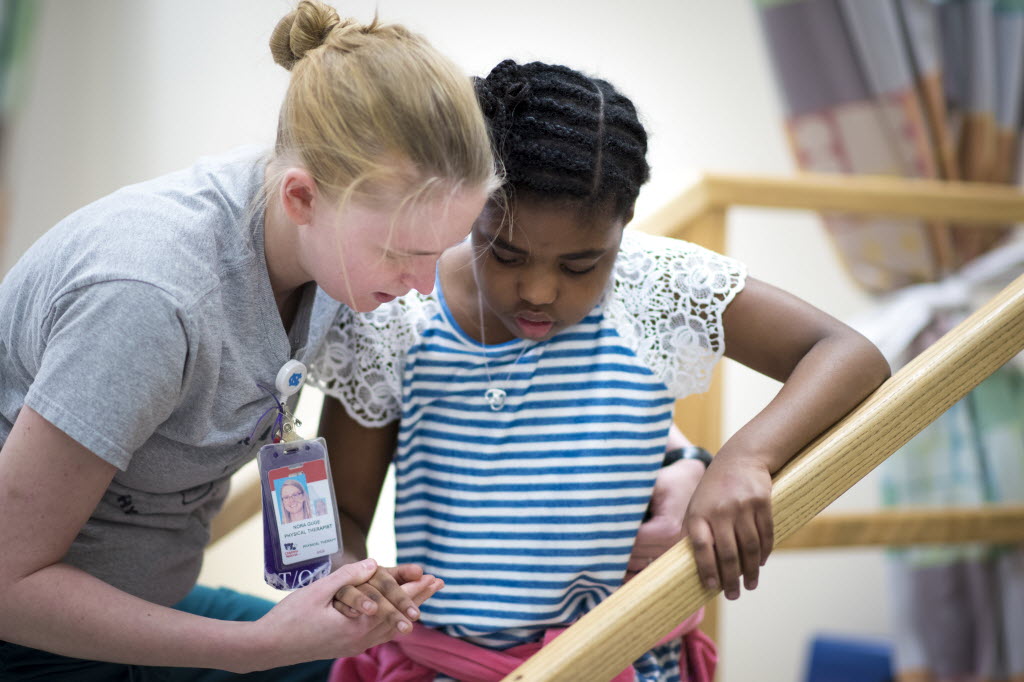Children’s National is one of few centers in the Washington, DC, area with expertise in treating children with different leg lengths (limb length discrepancy). We offer the complete range of treatments, including the only approved frameless limb lengthening device.
Limb Lengthening Treatments at Children’s National
Pediatric orthopaedic surgeons at Children’s National have a special interest and advanced training in caring for children with limb length discrepancies. We understand that treatment for a limb length discrepancy depends on the amount of difference between the legs expected when the child finishes growing. The specific treatment is determined by the amount of difference in the limb length and how much more the child will grow. We determine the precise timing within your child’s development when limb lengthening treatments can be most effective.
We offer an array of treatments, including:
- Shoe inserts: Also known as heel lifts, shoe inserts act like a wedge to lift the heel of your child’s short leg. We use shoe inserts in children with limb length discrepancies of up to two centimeters.
- Surgery to slow growth in the long leg (epiphysiodesis): Epiphysiodesis prevents the area of bone responsible for adding limb length (growth plate) from doing its job. This allows the short leg to catch up. We use epiphysiodesis in children who are still growing and have a limb length discrepancy of up to five centimeters.
- Bone shortening surgery: Removing a section of bone in the long leg allows your child to achieve equal limb length if he or she has stopped growing. Recovery from bone shortening surgery is much shorter than lengthening procedures.
- Limb lengthening devices: After surgically breaking the bone in your child’s short leg, we attach a limb lengthening device. The device slowly pulls the bones apart (up to one millimeter, or about the size of a pencil tip, per day) and the body fills in the gap with new bone tissue. These devices are used for children with limb length discrepancies of more than five centimeters, including children who are still growing as well as adolescents who have stopped growing.
Children’s National offers two types of limb lengthening devices:
- External frame device (fixator): This device attaches to the bone with the help of pins and wires. A frame made of bars or circular rings attaches to the pins and wires to keep the leg stable. Lengthening occurs by adjusting the frame, which pulls the pins (and the bones they are attached to) away from each other.
- PRECICE® Intramedullary Limb Lengthening System: PRECICE® is an expandable metal rod with an internal magnet. All of the hardware stays inside the bone. Lengthening occurs with the help of a remote control that activates the internal magnet. This gradually pulls the bones apart.
Limb Lengthening Devices: What to Expect
A limb lengthening device can change your child’s life. However, keeping up with regular care and adjustments requires a big commitment from your child and your family. Throughout your child’s journey, we are here for you as a source of information, support, and expertise.
If a limb lengthening device is right for your child, here’s what to expect:
- Developing a treatment plan: Using an X-ray of your child’s limb and special calculations, we determine the treatment options and best time in your child’s skeletal development to have surgery. We also help you determine which device best meets your child’s needs.
- Getting support: The idea of undergoing surgery and changing your family’s daily routine can take some getting used to. We help your family prepare by:
- Showing you the device
- Giving you opportunities to ask questions and talk about concerns
- Connecting you with experts from child life services, if needed
- Introducing you to families who have gone through the same procedure
- Care after surgery: Dedicated nurses perform around-the-clock monitoring to help your child avoid complications. Pediatric anesthesiologists also are available to help your child stay as comfortable as possible. Learn more about anesthesiology, sedation and perioperative medicine.
- Caring for your child at home: Before going home, we teach you everything you need to know about helping your child recover.
- Physical therapy: Physical therapy helps your child adapt to his or her device and learn how to get back into a normal daily routine.
- Weekly doctor’s visits: We monitor your child’s progress and answer any questions you may have. We may adjust the device or your child’s overall treatment plan during office visits.
- Surgery to remove the device: After your child has achieved equal limb length he or she will need additional surgery to remove the limb lengthening device.




